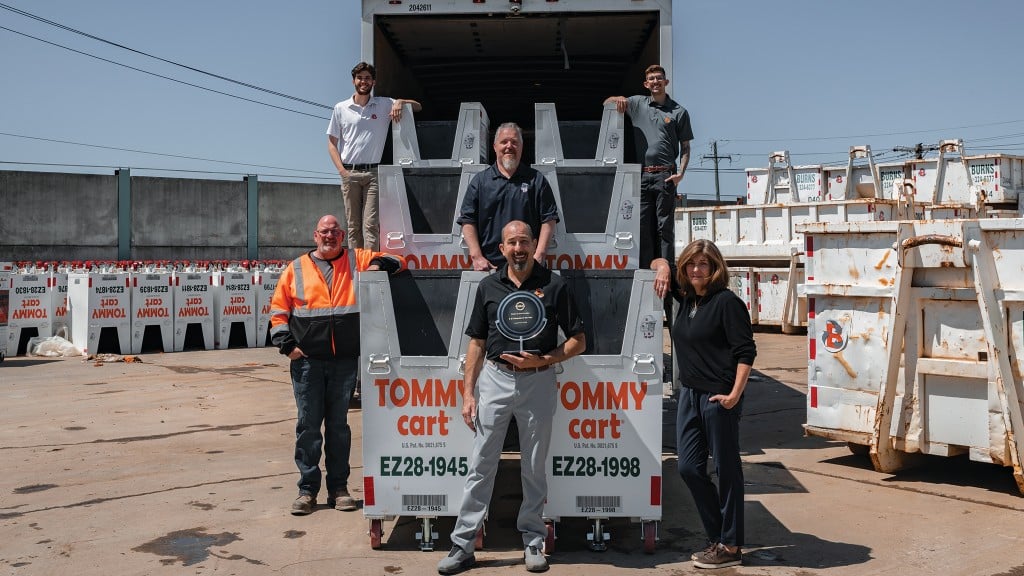by Stephen M. Bantillo, Executive Director, Recycling Certification Institute
The Recycling Certification Institute began conducting independent third-party certifications of C&D recycling facilities in 2013. But how did C&D facility certification come about and why is it important?
The C&D industry has long been contributing to recycling and the recovery of resources as part of its normal course of business. The US Green Building Council’s (USGBC) LEED program appeared on the scene comparatively recently and currently provides 1 or 2 points per project, given a specified level of C&D recycling has been achieved. Local governments have also increasingly implemented a variety of rules and regulations for demolition, construction and remodelling projects.
Overall, with increased demand for recycling of construction waste materials, the C&D industry has been increasing its performance, finding and creating markets, and recycling more materials than ever, as well as increasing recycling and material recovery rates. However, what had been missing from this mixture was a means of applying a uniform standard to verifying the recycling rates reported by C&D facilities…until recently.
In late 2013 the Recycling Certification Institute (RCI) began applying an ISO-level protocol to the Certification of C&D recycling facilities. The Construction and Demolition Recycling Association (CDRA) spearheaded the creation of the protocol, which was developed in collaboration with a cross-section of representatives from the building and construction industry, haulers, recyclers and government under the guidance of the USGBC.
With RCI’s implementation of an ISO-level national standard Protocol, better accounting and verification of facility data will lead to higher levels of certainty regarding the accuracy of reporting and recovery of C&D material
Registration and Certification
Facility operators wanting to become certified with RCI first need to “Register” via RCI’s website (www.recyclingcertification.org). This is where facilities list fundamental information such as hours of operation, materials accepted, as well as the weight and types of materials that are recycled. Facilities may also elect to register with RCI and not become certified. What that means is that these facilities are self-reporting and their data and operations have not been audited and verified by RCI. Their information will still however be published on RCI’s website.
For those facilities wanting to move up to the next level and become certified, RCI will dispatch trained evaluators to conduct a thorough review of their operations. The evaluators will contact the interested facility to explain the process and schedule a site visit to conduct a review. They will then examine the process train for the materials associated with the line or operation to be certified, compare that to the preliminary application (registration), verify a mass balance of data for the most recent 12 months of operation, and develop an evaluation report for the facility.
A key element of the evaluation is to review the points where a facility’s data can be affected by staff and operations, and then determine if controls are in place to maintain the integrity of the data. The desired outcome is that a high level of confidence can be established that the recycling rates reported by the facility are accurate, reliable and verifiable. The certified facility is then listed on RCI’s web page under “Certified Facilities” along with its recycling rates and a copy of its evaluation report.
The overall objectives of Certification are firstly to ensure adequate controls exist for the accounting of material inputs and outputs of a facility over a specified period of time, and secondly, to provide an objective, transparent and not unduly costly process for eligible firms seeking to communicate their reuse, recycling and recovery of C&D materials. Thirdly, certification is meant to provide users of certified facilities some assurance that the procedures and declarations are consistently applied and verified.
LEED Pilot 3rd Point
Under the USGBC’s LEED program, up to 2 points can be issued for “Construction Waste Management” in Materials and Resources. Recently approved, LEED v4 changes how the points may be distributed. For instance, projects will still receive 1 and 2 points for 50- and 75 percent diversion from landfill, respectively. However, “alternative daily cover” has been specifically excluded as diversion from landfill calculations.
RCI is currently working with StopWaste.Org, a local government agency in Alameda County, California, who has submitted a proposal for a Pilot 3rd Point to be added to the LEED Pilot Credit Library. Per the submittal, Project teams must meet the minimum recycling requirements of the C&D credit(s) in the applicable LEED rating system (the waste generated/square feet credit option is not eligible) and teams must utilize a recycling facility which processes and recycles commingled C&D materials and which has received third-party certification of their recycling rates.
If the USGBC approves implementation of this Pilot 3rd Point, recycling C&D materials at a high-performing facility certified by an approved organization can contribute up to 3 points to the project. The benefits would be many, but considered central to this effort would be greater confidence in the issuance of LEED points; increased credibility of an industry that has contributed to the achievement of environmental goals; and movement toward a uniform high standard that reduces confusion for contractors providing services across jurisdictional boundaries.
Not surprisingly, the issues relating to (and the need for) C&D facility certification in Canada are quite similar to those in the U.S. For instance, in LEED Canada (CaGBC) there are up to 2 points issued for “Construction Waste Management” in the category of Materials and Resources.
And with LEED v4, CaGBC is moving toward streamlining options to demonstrate compliance vis-à-vis international rating systems. While RCI’s initial focus is on U.S. facilities, its broader interest is in implementation of uniform standards that will serve industry, government and LEED internationally.


